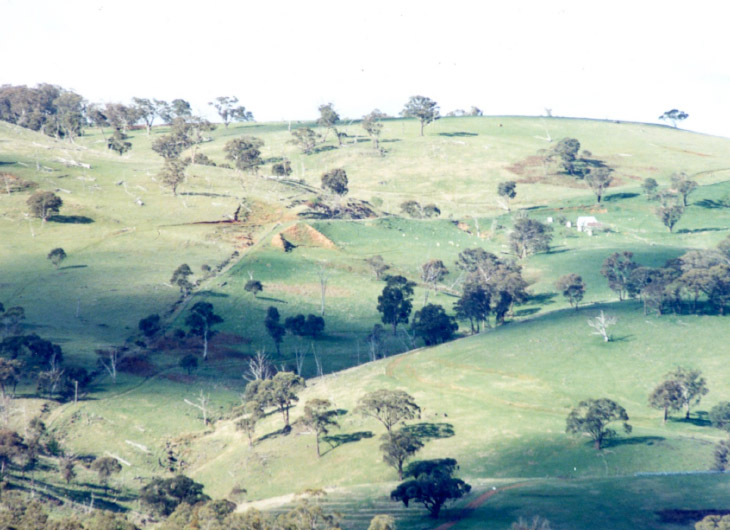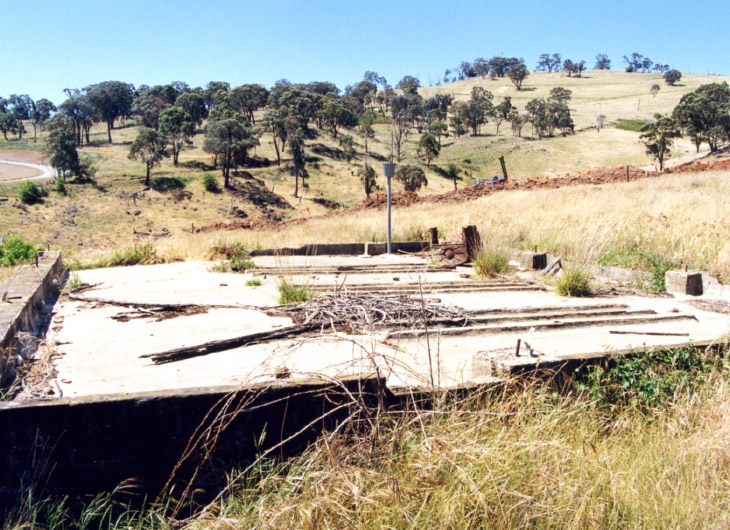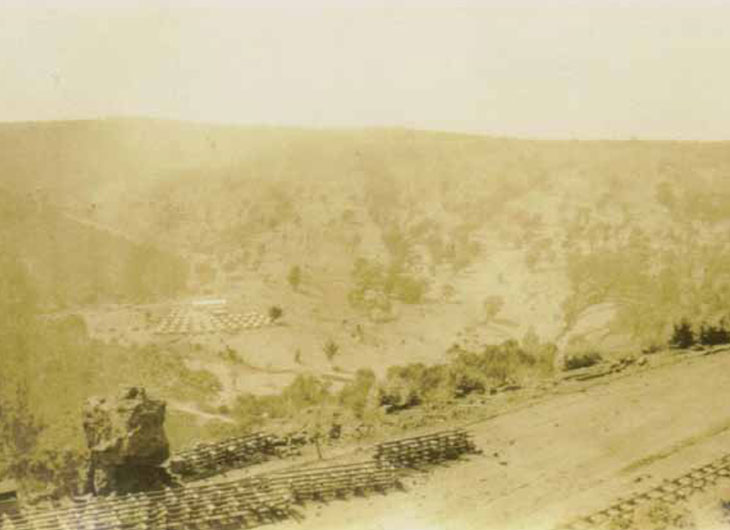Historical Timeline
- 1820s to 1840s
- 1850s
- 1860s
- 1870s to 1890s
- 1900s – 1940s
Cadia, the last hurrah, 1930s and 1940s
During the 1930s and 1940s, there were various schemes to recover gold from the Cadia district, most of which were unsuccessful.
Iron ore was again quarried from the Iron Duke to help the war effort from 1943 to 1945 and taken to Australian Iron & Steel (AIS) at Port Kembla. The old railway line from Spring Hill was refurbished. A new incline was built to replace the aerial ropeway, which was no longer repairable. Cadia Village could no longer accommodate the men, so the company set up a camp, named ‘Tent City”.
The quarry continued until 29 August 1945, after which the railway line was removed.


